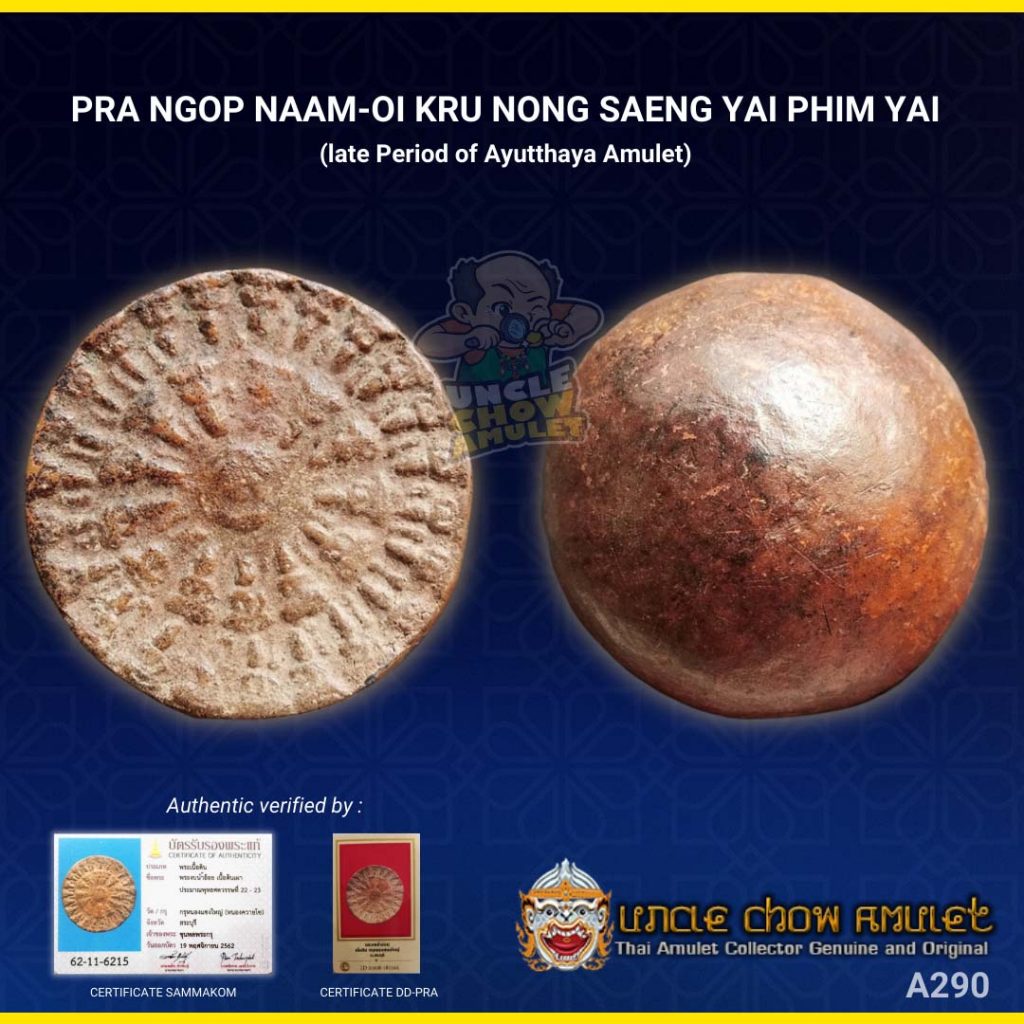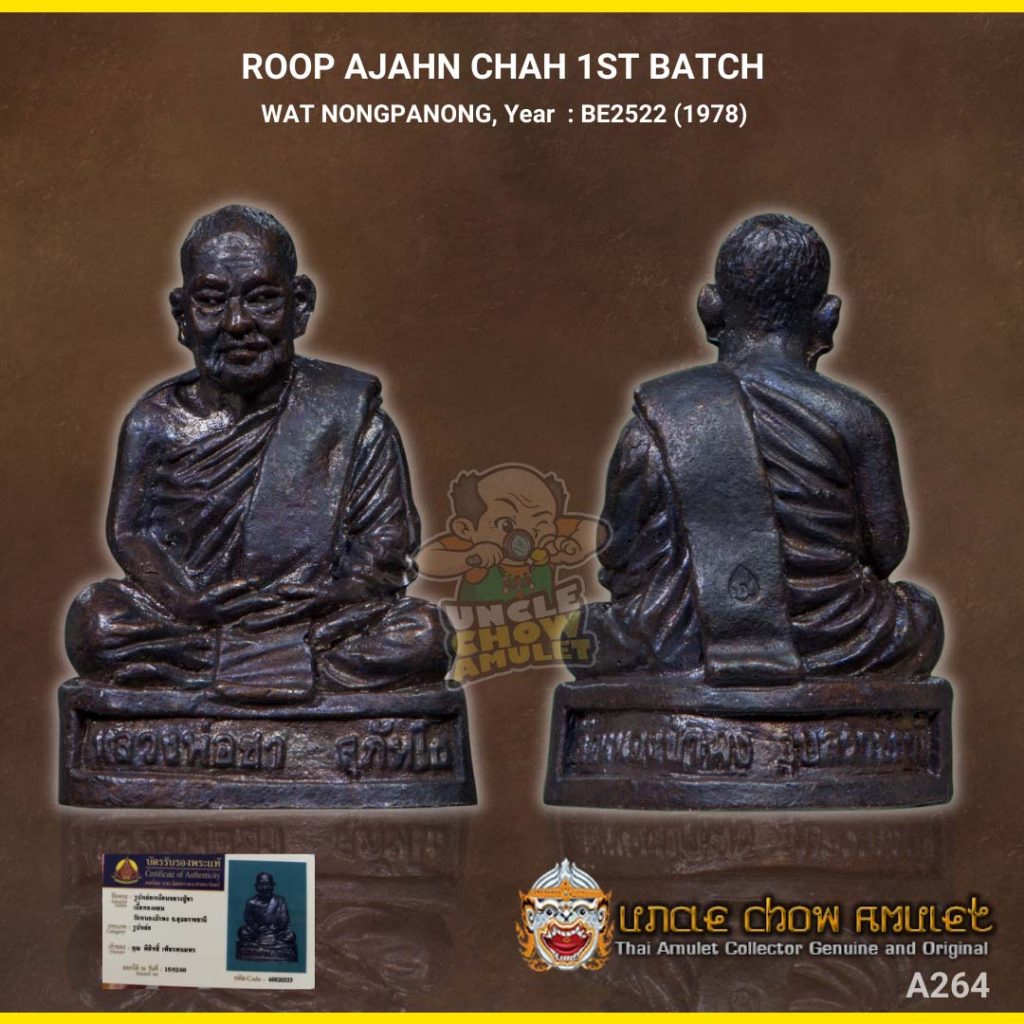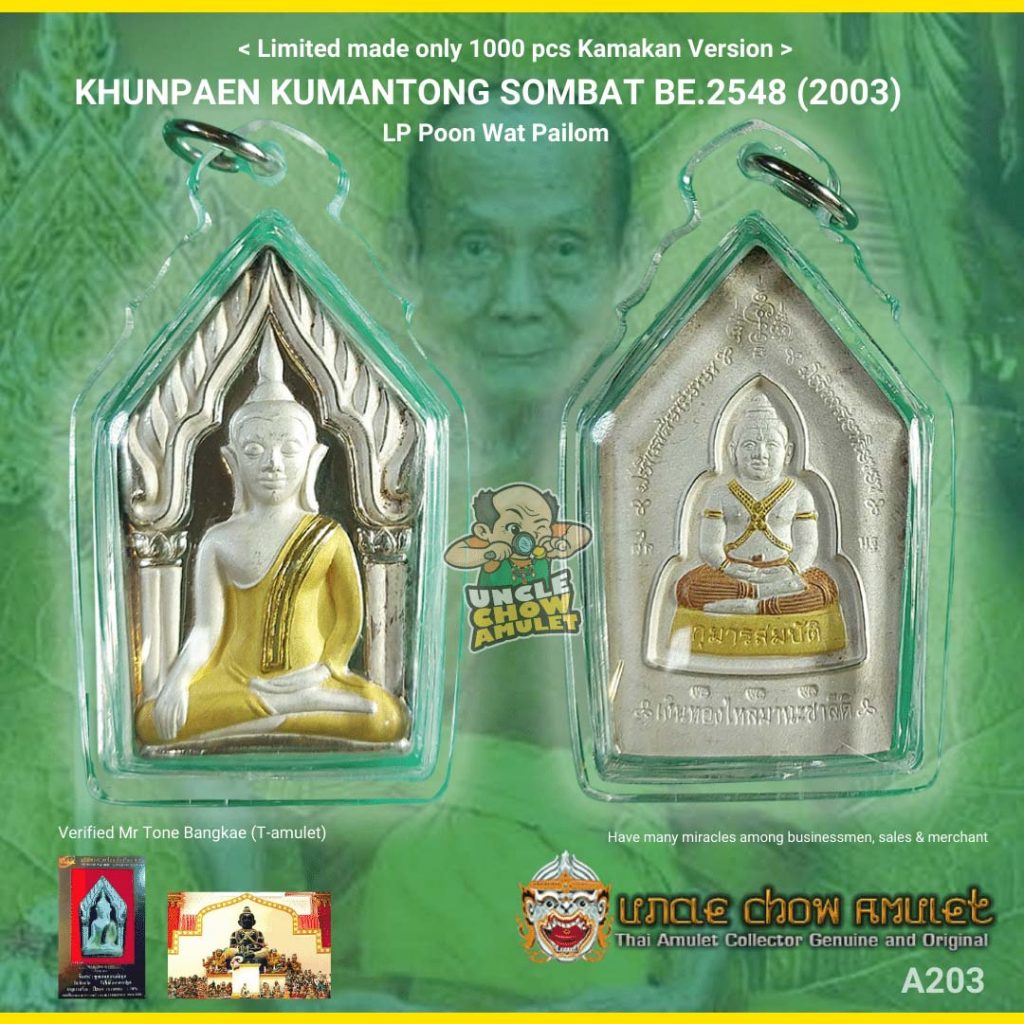Welcome to our store Uncle Chow Amulet Gallery

Uncle Chow Amulet
Ajahn Lee Wat Asokaram – Buddha Phra Phong Photijak Baipoh
Sold Out
Thailand amulet code: A80 Buddha Phra Phong Photijak Baipoh Master: Ajahn Lee Wat Asokaram T-Amulet certificate Ajahn Lee is regarded as one of the most…
Category : Ajahn Lee Wat Asokaram
Share :
Product Details
Thailand amulet code: A80
Buddha Phra Phong Photijak Baipoh
Master: Ajahn Lee Wat Asokaram
T-Amulet certificate
Ajahn Lee is regarded as one of the most influential Thai Forest Tradition Meditation Masters of the 20th century. Among the forest monks, he devised the most comprehensive meditation instructions and composed the most detailed map of the jhanas. He was one of the first teachers to bring the teachings of the Forest Tradition to the mainstream of Thai society. Although he never spoke much of his own meditative attainments, it was widely believed among his students that he attained the mastery of supernatural powers and that he was a deeply attuned psychic.
In the end, Ajahn Lee was honored as one of the great teachers who had reached the stage. Along with some of Ajahn Mun’s main students such as: Ajahn Fan, LP Dun, LP Khao, LP Sim, Luangta Maha boowa, etc. They put a strong dhammayut (forest monk) foundation within the Buddhist community of Thailand.
🔥About amulet Buddha Phongphotijuk 🔥
Phra Buddha PhongPhotijuk Amulet is a series which was made using various block press molds resulting in this series having it’s own Pantheon of different Phims made from different substances which included Nur Bailan (Burnt Sacred Parchment Powders), Nur Din (Reddened Sacred Clay), Nur Kesom (Pollens) and others.
Ajahn Lee collected some of the best Muan Sarn Sacred Powders from some of the Greatest Masters of that era to use for this edition, including Sacred Powders from Phra Ajahn Sao, Phra Ajahn Mun Bhuridatto, Phra Ajahn Fan Acharo, Phra Ajahn Tess, Phra Ajahn Kongma, Luang Ta Maha Boowa and Ajahn Chah Supatto (Wat Nong Paa Pong). He mixed those with 108 kinds of Kesom (Flower Pollens) and flowers from the monks that was used for praying to the Buddha. The powders were mixed with 100 year old Holy Water from Prachinburi and baked.
Ajahn Lee also added earths and other sacred substances taken from Buddha Gaya, India (Buddha’s Enlightenment and passing into Nibbana). Another very powerful ingredients of the Muan Sarn Sacred Powders was the addition of “Sai Tham Gong Sai” which is a magical sand found inside a very difficult to access cave in the mountains forests of South of Thailand.
He also used some “Khaw Lersi” which was a mysterious substance found within a strange anomaly within a scared cave in the North Eastern Issan region which when broken up opened was found to have long white rice like pieces of hardened substance which was thousands of years old.
This “Khaw Lersi” was believed to be rice where the Lersi Hermits living in caves meditate in ancient times had taken rice which they had leftover and placed within a magical shell and attached it to the cave wall. Fossilised Seashells from within a mountain cave were also used with the aforementioned substance to ground down into the Muan Sarn Sacred Powders of the Phra Buddha PhongPhotijuk.
Ajahn Lee began to consecrate amulets at Wat Paa Klong kung around BE 2496 and used a devise he had obtained from his visits to India as the model to carve the block press molds from. The original images were from two different carved Buddha images which Ajahn Lee had from India which were carved in Ivory.
And this Phra Buddha PhongPhotijuk amulet comes with T-amulet certificate for your pleasure collecting original and 100% authentic amulet
🔥BRIEF BIOGRAPHY🔥
Ajahn Lee first attended school at age 12 and left school at age 17. At this time, he was preoccuppied with earning money and had a plan for his early life where he could accumulate a life savings and marry at age 30. Ajahn Lee’s priorities began to change at around the age of 20, when he accidentally killed a dog who ate an egg whilst he was cooking. As he recollected in his autobiography: “Immediately, I was sorry for what I had done. “How on earth can I make up for this sin?” I Thought”. With this remorsed thought in his mind, that event influenced him to ordain as a monk.
After ordaining as a Maha Nikai monk, he was reported being unsatisfied with the behaviour of monks surrounding him. Those monks were “Playing Chess”, “Held Cock Fights” and even “ate food in the evenings”.
Upon meeting Ajahn Mun Bhuridatto, Ajahn Lee reordained under the Dhammayut Sect where he wandered in the forests as “Tudong” (a monk who observes the dhutanga [ascetic practice]. He wandered and traveled as far as Burma, Cambodia and India.
After the rainy retreats in 1927, Ajahn Lee went back to his hometown (in present day known as “Amnat District”). As he stayed at a spririt shrine in a nearby village, his father found of his whereabouts and came and later escorted him the rest of the way. When he arrived he stayed at the villages cemetery where the villagers refused to dwell near for the fear of ghosts and evil spirits.
Ajahn Lee stayed there for several weeks giving sermons to people giving sermons to people who came from other villages. Ajahn Lee got the villagers to take refuge in the Triple Gems. According to Ajahn Lee, he wanted to put an end to the villagers’ fears of ghosts and evil spirits. This made some of the villagers fearful and upset, and they opposed him being there. When the district officer stayed there one night in the village, he agreed and sided with Ajahn Lee’s agenda to rid the area of spirit worship and make Buddhist practice more orthodox and accepted.



